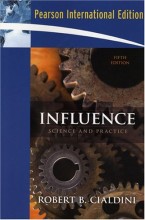Summary: Advanced Cn Driving Week 7
- This + 400k other summaries
- A unique study and practice tool
- Never study anything twice again
- Get the grades you hope for
- 100% sure, 100% understanding
Read the summary and the most important questions on Advanced CN driving week 7
-
1 Driving simulation for evaluation and rehabilitation of driving after stroke
This is a preview. There are 5 more flashcards available for chapter 1
Show more cards here -
Driving is an important part of self-identity. Name 4 results of losing driving ability in elderly
1. Poor health
2. increased costs health care
3. decreased access to care
4. depression -
Name 5 abilities that can be affected by neurological disorders and influence driving abilities
1. motor
2. visual
3. cognitive
4. perceptual
5. sensory -
Stroke is not part of poststroke care. Name a advantage and disadvantage of stroke survivors not allowed to drive
1. Advantage is protection of community
2. Disadvantage is restrictions of pt. lifestyle, independence and livelihood. -
Name 4 limitations of current methodologies for driving evaluation after stroke
1. Not clear which tests most salient for assessing driving (paper-pencil, on-road tests etc.)
2. Difficult decision regarding patients falling on boundary fit or unfit to drive
3. Past examined methodologies with mixed results with each method having unique weaknesses (face validity, sensitivity, specificity, risk of examiner in on-road testing)
4. lack of standardized and age-normed tests related to driving performance and safety, therefore no prediction about crashes is possible -
Explain shortly the motivational model of driving.
driving is a transient and situation-specific activity that is self-paced where driver selects amount of risk he is willing to tolerate. risk level determines amounts of motor, visual, and cognitive resources allocated. together influencing driver’s behavior -
Explain the information processing model of driving shortly
Driving occurs in a sequence of stages; perception, decision, response selection, response execution. Criticized for not incorporating motivation or emotion -
Explain the cognitive process of driving model shortly.
driving performed on 3 hierarchical levels: operational (basic actions like braking/steering), tactical (drivers perceptions and reactions to driving situation) and strategic (route planning, decision making) -
Explain the Driving controlled by skill-based, rule-based and knowledge-based behaviors model of driving shortly.
skill-based involves automated sequence. Rule-based refers to use of driving principles. Knowledge-based occurs when driver’s own driving experience makes most sense -
Explain the top-down bottom-up model of driving.
Describing driving as activity performed using top down and bottom up approach. Uncertain novel situations: top down, conscious activity using higher order skills as planning, decision making etc. Strategic, tactical and operational aspects are upregulated to adjust safety buffers. In familiar situations: driving as bottom up activity with very little attention. Whether top-down or bottom up is activated depends on situation, but also age, medical conditions, fatigue level, sobriety which produce deficits in sensory input, working memory, visual search, attention, speed of information processing and decision making. But: disease can also influence bottom up control -
What are current issues with driving simulators? Name 3.
1. There is no test-retest reliability data for driving simulators
2. Driving simulator data not comparable between studies
because no common standards for software and hardware
3. Simulator sickness remains problem à improving simulator display
- Higher grades + faster learning
- Never study anything twice
- 100% sure, 100% understanding































